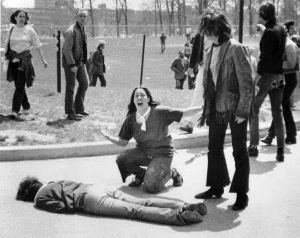
John Filo’s Pulitzer Prize-winning photograph of Mary Ann Vecchio kneeling over the dead body of Jeffrey Miller
On this day in 1970, the Kent State shootings, also known as the May 4 massacre or the Kent State massacre, of unarmed college students by members of the Ohio National Guard at Kent State University in Kent, Ohio, during a mass protest against the bombing of Cambodia by United States military forces. Twenty-eight guardsmen fired approximately 67 rounds over a period of 13 seconds, killing four students and wounding nine others, one of whom suffered permanent paralysis. Those killed were: Jeffrey Glenn Miller, age 20; Allison B. Krause, age 19; William Knox Schroeder, age 19; Sandra Lee Scheuer, age 20.
Some of the students who were shot had been protesting against the Cambodian Campaign, which President Richard Nixon announced during a television address on April 30 of that year. Other students who were shot had been walking nearby or observing the protest from a distance.
There was a significant national response to the shootings: hundreds of universities, colleges, and high schools closed throughout the United States due to a student strike of 4 million students, and the event further affected public opinion, at an already socially contentious time, over the role of the United States in the Vietnam War.
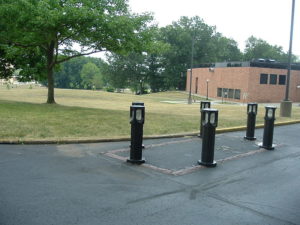 The Final Footprint
The Final Footprint
Each May 4 from 1971 to 1975, the Kent State University administration sponsored an official commemoration of the shootings. Upon the university’s announcement in 1976 that it would no longer sponsor such commemorations, the May 4 Task Force, a group made up of students and community members, was formed for this purpose. The group has organized a commemoration on the university’s campus each year since 1976; events generally include a silent march around the campus, a candlelight vigil, a ringing of the Victory Bell in memory of those killed and injured, speakers (always including eyewitnesses and family members), and music.
On May 12, 1977, a tent city was erected and maintained for a period of more than 60 days by a group of several dozen protesters on the Kent State campus. The protesters, led by the May 4 Task Force but also including community members and local clergy, were attempting to prevent the university from erecting a gymnasium annex on part of the site where the shootings had occurred seven years earlier, which they believed would obscure the historical event. Law enforcement finally brought the tent city to an end on July 12, 1977, after the forced removal and arrest of 193 people. The event gained national press coverage and the issue was taken to the U.S. Supreme Court.
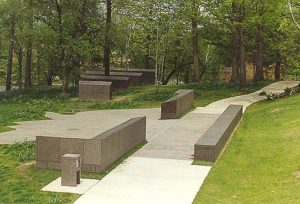 In 1990, twenty years after the shootings, a memorial commemorating the events of May 4 was dedicated on the campus on a 2.5-acre (1.0 ha) site overlooking the University’s Commons where the student protest took place. Even the construction of the monument became controversial and, in the end, only 7% of the design was constructed. The memorial does not contain the names of those killed or wounded in the shooting; under pressure, the university agreed to install a plaque near it with the names.
In 1990, twenty years after the shootings, a memorial commemorating the events of May 4 was dedicated on the campus on a 2.5-acre (1.0 ha) site overlooking the University’s Commons where the student protest took place. Even the construction of the monument became controversial and, in the end, only 7% of the design was constructed. The memorial does not contain the names of those killed or wounded in the shooting; under pressure, the university agreed to install a plaque near it with the names.
In 1999, at the urging of relatives of the four students killed in 1970, the university constructed an individual memorial for each of the students in the parking lot between Taylor and Prentice halls. Each of the four memorials is located on the exact spot where the student fell, mortally wounded. They are surrounded by a raised rectangle of granite featuring six lightposts approximately four feet high, with each student’s name engraved on a triangular marble plaque in one corner.
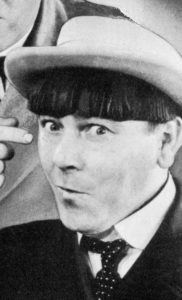 On this day in 1975, actor and comedian and Stooge, Moe Howard died of lung cancer in Los Angeles, California just shy of his 78th birthday. Born Moses Harry Horwitz on 19 June 1897 in the Brownsville neighborhood of Brooklyn. The leader of The Three Stooges, the classic comedy team who stared in motion pictures and television for four decades. The original line up included Moe and his brother Shemp and Larry Fine. When Shemp left in 1932 he was replaced by another brother, Jerome who took the stage name, Curly. Shemp returned when Curly suffered a stroke in 1946. On 22 November 1955, Shemp died of a heart attack and was replaced by Joe Besser. Besser was eventually replaced by Joe DeRita who took the name Curly-Joe. Moe was married to Helen Schonberger (1925-1975 his death). He apparently was very romantic and wrote his wife hundreds of love poems. My kinda guy! The Three Stooges humour spans generations. One of my sons is a fan.
On this day in 1975, actor and comedian and Stooge, Moe Howard died of lung cancer in Los Angeles, California just shy of his 78th birthday. Born Moses Harry Horwitz on 19 June 1897 in the Brownsville neighborhood of Brooklyn. The leader of The Three Stooges, the classic comedy team who stared in motion pictures and television for four decades. The original line up included Moe and his brother Shemp and Larry Fine. When Shemp left in 1932 he was replaced by another brother, Jerome who took the stage name, Curly. Shemp returned when Curly suffered a stroke in 1946. On 22 November 1955, Shemp died of a heart attack and was replaced by Joe Besser. Besser was eventually replaced by Joe DeRita who took the name Curly-Joe. Moe was married to Helen Schonberger (1925-1975 his death). He apparently was very romantic and wrote his wife hundreds of love poems. My kinda guy! The Three Stooges humour spans generations. One of my sons is a fan.
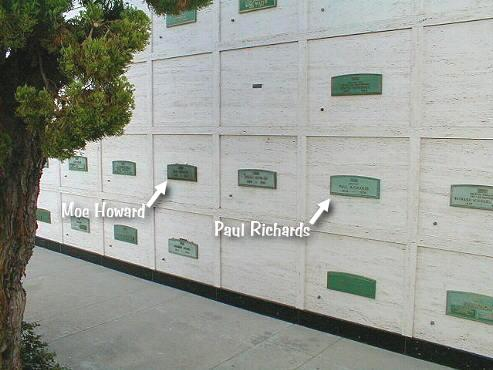
The Final Footprint – Howard is entombed in the Garden of Memories, Alcove of Love mausoleum at Hillside Memorial Park in Culver City, California. His wife Helen was entombed next to him when she passed away in later that year. Other notable Final Footprints at Hillside Memorial include; Jack Benny, Milton Berle, Neil Bogart, Cyd Charisse, Percy Faith, Lorne Greene, Al Jolson, Michael Landon, Leonard Nimoy, Suzanne Pleshette, Dinah Shore, Lupita Tovar, and Shelley Winters.
| Diana Dors | |
|---|---|
 in I Married a Woman trailer, 1958 |
|
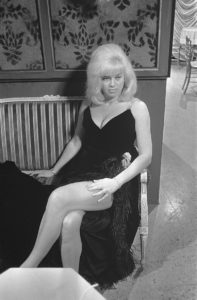 On this day in 1984, actress and singer Diana Dors died from ovarian cancer in Windsor, Berkshire, England at the age of 52. Born Diana Mary Fluck on 23 October 1931 in Swindon, Wiltshire, England. She first came to public notice as a blonde bombshell in the style of American Marilyn Monroe, as promoted by her first husband, Dennis Hamilton, mostly via sex film-comedies and risqué modelling. After it turned out that Hamilton had been defrauding her, she continued to play up to her established image, and she made tabloid headlines with the parties reportedly held at her house. Later, she showed a genuine talent for TV, recordings, and cabaret, and gained new popularity as a regular chat-show guest.
On this day in 1984, actress and singer Diana Dors died from ovarian cancer in Windsor, Berkshire, England at the age of 52. Born Diana Mary Fluck on 23 October 1931 in Swindon, Wiltshire, England. She first came to public notice as a blonde bombshell in the style of American Marilyn Monroe, as promoted by her first husband, Dennis Hamilton, mostly via sex film-comedies and risqué modelling. After it turned out that Hamilton had been defrauding her, she continued to play up to her established image, and she made tabloid headlines with the parties reportedly held at her house. Later, she showed a genuine talent for TV, recordings, and cabaret, and gained new popularity as a regular chat-show guest.
Dors claimed to have left a large fortune to her son in her will, via a secret code in the possession of her third husband, actor Alan Lake, but after Lake’s suicide, this code was never found, and no money has ever been traced.
Dors was married three times:
- Dennis Hamilton Gittins (3 July 1951 – 3 January 1959, his death): married five weeks after meeting, at Caxton Hall; no children; lived in London, Berkshire, and Hollywood
- Richard Dawson (12 April 1959 – 1966, divorced): married in New York; two sons, Mark Dawson and Gary Dawson; lived in London, New York, and Hollywood
- Alan Lake (23 November 1968 – her death): married at Caxton Hall; one son, Jason Lake; lived at Orchard Manor, Sunningdale, Berkshire
In 1949, while filming Diamond City, she had a relationship with businessman Michael Caborn-Waterfield, the son of the Count Del-Colnaghi, who later founded the Ann Summerschain, which he named after his cousin/secretary. During the short relationship, Dors became pregnant, but Caborn-Waterfield paid for a back-street abortion, which took place on a kitchen table in Battersea. The relationship continued for a time, before Dors met Dennis Hamilton Gittins on the set of Lady Godiva Rides Again, with whom she had a second abortion in 1951.
During her relationship with Hamilton and until a few months before her death, Dors regularly held adult parties at her home. There, a number of celebrities, amply supplied with alcohol and drugs, mixed with young starlets against a background of both softcore and hardcore porn films. Dors gave all her guests full access to the entire house; her son Jason Lake later alleged in various media interviews and publications that she had equipped it with 8 mm movie cameras. The young starlets were made aware of the arrangements and were allowed to attend for free in return for making sure that their celebrity partners performed in bed at the right camera angles.
Dors became an early subject of the “celebrity exposé” tabloids, appearing regularly in the News of the World. In need of cash after her separation from Hamilton in 1958, she gave an interview in which she described their lives and the adult group parties in full, frank detail. The interview was serialised in the tabloid for 12 weeks, followed by an extended six-week series of sensational stories, creating negative publicity. Subsequently, the Archbishop of Canterbury, Geoffrey Fisher, denounced Dors as a “wayward hussy”.
Television news and film companies with more general interests, partly because of her popularity and partly because of who was attending the parties, were unwilling to repeat the stories until well after Dors’ death. Her former lover and party guest Bob Monkhouse later commented in an interview after Dors’ death, “The awkward part about an orgy, is that afterwards you’re not too sure who to thank.”
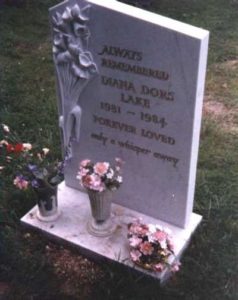 The Final Footprint
The Final Footprint
She had converted to Catholicism in early 1973; hence, her funeral service was held at the Sacred Heart Church in Sunningdale on 11 May 1984, conducted by Father Theodore Fontanari. She was buried in Sunningdale Catholic Cemetery.
#RIP #OTD in 2009 actor (Blazing Saddles, History of the World Part I, The Cannonball Run), comedian and author Dom DeLuise died from cancer at Saint John’s Health Center in Santa Monica, California, at age 75. Calvary Cemetery, Woodside, New York
Have you planned yours yet?
Follow TFF on twitter @RIPTFF

